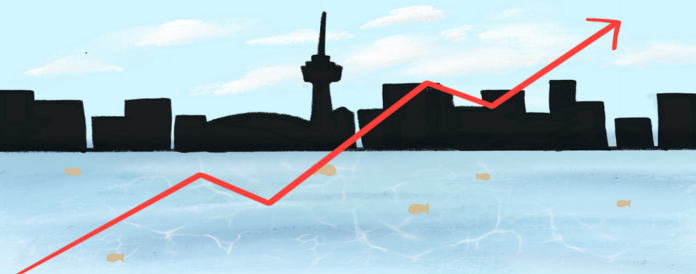Professor Dr. Roy Brouwer, Executive Director, the Water Institute, Faculty of Arts, Department of Economics, University Research Chair in Water Resources Economics at UW, partnered with Anne Nobel, a Ph.D. researcher in Environmental Economics, alongside four others, to research about the willingness to pay for biodiversity conservation. Their findings were published in an article titled “Are biodiversity losses valued differently when they are caused by human activities? A meta-analysis of the non-use valuation literature” published in July 2020.
“Given that we know that climate change will cause losses in terms of biodiversity, we wanted to know what the economic damages are,” Nobel said.
The motivation for this research was to measure the impacts of climate change that are less quantifiable.
“When it is about nature, it is more difficult because nature does not produce money by itself, so how do you measure the economic damages?” Nobel said.
It took them approximately one year to summarize 40 years worth of literature into one quantitative model, seeking an answer to the hypothetical question of “how much are you willing to pay to protect biodiversity?”
“The key finding is that people are willing to pay more for protecting biodiversity if potential losses are caused by human beings,” Nobel said.
Using 159 non-use value estimates, they found that the mean public willingness to pay for biodiversity preservation policies is $118 USD per household annually.
One limitation of this study is that the data used is mainly sourced from the United States. Therefore, the results of this study may not be applicable elsewhere due to differences in demographics, particularly in terms of disposable income.
It is important to emphasize that the question asked is hypothetical. “You do not really know if people answer the questions the same way they act in real life,” Nobel said.
Their findings also found that the damage cost estimates used in integrated climate change models are underestimated since they fail to include the public’s willingness to pay a premium for human-caused biodiversity loss.
“If you underestimate the damages, you might take less action,” Nobel said. “More action might be needed based on our findings.”
Their findings can play a crucial role in the fight against climate change by providing us with a more accurate calculation of what has to be done.
“I think the next step after our research is to update these integrated climate models,” Nobel said. “If you do that, then you have a better idea of what the climate damages might be in the future and how much action you should take today.”
































